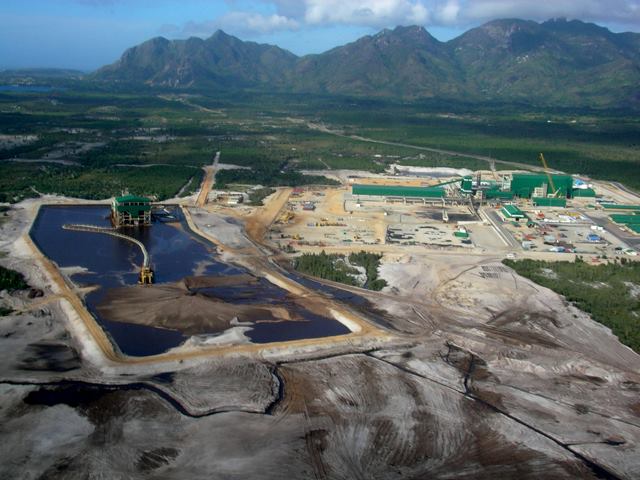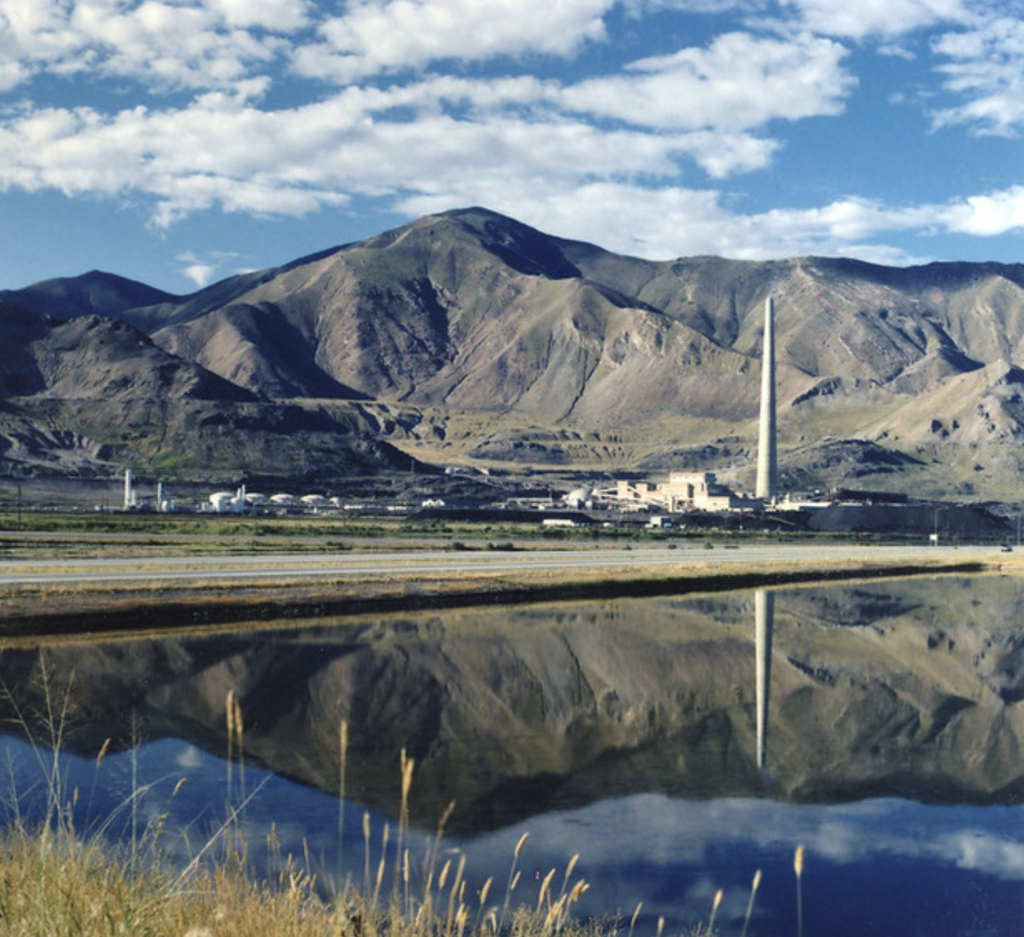Staff Writer | April 4, 2024 |

Rio Tinto’s QMM ilmenite mine in Madagascar.
Credit: QIT Madagascar Minerals.
A group of rural villagers from Madagascar has launched a legal claim against Rio Tinto over allegations that pollution from a nearby mine has caused them to ingest dangerous levels of uranium and lead.

In a letter of claim, a document that is an early step in a lawsuit, the 64 residents of the Anosy region in southern Madagascar say that the QIT Minerals Madagascar (QMM) mine in Fort Dauphin, which is 80% owned by Rio Tinto, has contaminated surrounding lakes and waterways with the toxic metals.
According to the group, up to 15,000 people in the area rely on these water sources for their drinking and domestic water supply.
Lawyers from the law firm Leigh Day said blood tests carried out on members of the communities in the area around Fort Dauphin have shown elevated levels of lead in their bodies that exceed World Health Organization thresholds.
One individual has such high levels of lead that they require a medical process called chelation therapy to remove it from their bloodstream, according to the claim.
Lead is especially harmful to young children, causing permanent brain damage that can lead to a range of cognitive and behavioral disorders. Exposure to uranium can damage the body’s development, particularly in children and pregnant women, as well as increasing cancer rates and damaging kidney function.
The QMM mine produces ilmenite, which is used to manufacture titanium dioxide, a white pigment used in paints, food, cosmetics, and other items. The mine extracts ilmenite from the sands along the edge of Lakes Besaroy and Ambavarano.
Rio Tinto has a troubled track record in Madagascar.
A 2019 study found that downstream of the Madagascar mineral sands operation, water contained high concentrations of uranium and lead, potentially endangering local residents who depend on a nearby lake and river for drinking water.
In 2022, QIT Madagascar Minerals released water from the mine site into the surrounding environment due to heavy rainfall. Dead fish were found after the water release.
“While Rio Tinto extracts large profits from its mining operations in Madagascar, our clients’ case is that they and other local families are being forced to consume water contaminated with harmful heavy metals. In bringing this case, our clients are seeking accountability and justice for the damage that has been caused to their local environment and their health,” Paul Dowling, Leigh Day’s lead partner on the case, said.
On Thursday, investors at the company annual meeting questioned Rio about its Madagascar mineral sands operation.
Sinead Kaufman, chief executive of Rio’s minerals division, in response highlighted an independent report commissioned by the company to investigate the fish deaths.
“The report outcome was inconclusive and it said that we (it) cannot find any direct evidence on any heavy metals contamination that caused the fish deaths but also it cannot find any conclusion,” she said.
A group of rural villagers from Madagascar has launched a legal claim against Rio Tinto over allegations that pollution from a nearby mine has caused them to ingest dangerous levels of uranium and lead.

In a letter of claim, a document that is an early step in a lawsuit, the 64 residents of the Anosy region in southern Madagascar say that the QIT Minerals Madagascar (QMM) mine in Fort Dauphin, which is 80% owned by Rio Tinto, has contaminated surrounding lakes and waterways with the toxic metals.
According to the group, up to 15,000 people in the area rely on these water sources for their drinking and domestic water supply.
Lawyers from the law firm Leigh Day said blood tests carried out on members of the communities in the area around Fort Dauphin have shown elevated levels of lead in their bodies that exceed World Health Organization thresholds.
One individual has such high levels of lead that they require a medical process called chelation therapy to remove it from their bloodstream, according to the claim.
Lead is especially harmful to young children, causing permanent brain damage that can lead to a range of cognitive and behavioral disorders. Exposure to uranium can damage the body’s development, particularly in children and pregnant women, as well as increasing cancer rates and damaging kidney function.
The QMM mine produces ilmenite, which is used to manufacture titanium dioxide, a white pigment used in paints, food, cosmetics, and other items. The mine extracts ilmenite from the sands along the edge of Lakes Besaroy and Ambavarano.
Rio Tinto has a troubled track record in Madagascar.
A 2019 study found that downstream of the Madagascar mineral sands operation, water contained high concentrations of uranium and lead, potentially endangering local residents who depend on a nearby lake and river for drinking water.
In 2022, QIT Madagascar Minerals released water from the mine site into the surrounding environment due to heavy rainfall. Dead fish were found after the water release.
“While Rio Tinto extracts large profits from its mining operations in Madagascar, our clients’ case is that they and other local families are being forced to consume water contaminated with harmful heavy metals. In bringing this case, our clients are seeking accountability and justice for the damage that has been caused to their local environment and their health,” Paul Dowling, Leigh Day’s lead partner on the case, said.
On Thursday, investors at the company annual meeting questioned Rio about its Madagascar mineral sands operation.
Sinead Kaufman, chief executive of Rio’s minerals division, in response highlighted an independent report commissioned by the company to investigate the fish deaths.
“The report outcome was inconclusive and it said that we (it) cannot find any direct evidence on any heavy metals contamination that caused the fish deaths but also it cannot find any conclusion,” she said.
Reuters | April 4, 2024 |

Pond at Rio’s Kennecott copper mine in Utah. Image from Rio Tinto.
Rio Tinto faced demands from shareholders at its annual meeting on Thursday to come clean on environmental issues, including water and biodiversity, as the company said it was committed to achieving an “impeccable ESG” performance.

Mining, responsible for 4% to 7% of greenhouse-gas global emissions in 2020, is under the spotlight as a provider of critical raw materials needed for the energy transition, including electric vehicles and renewable energy infrastructure.

“We are finding an economic pathway to reach our targets on decarbonization, in partnership with governments, customers and communities,” CEO Jakob Stausholm said at the annual meeting in London.
Rio aims to reduce Scope 1 and 2 carbon emissions – direct emissions by the company and certain types of indirect emissions – by 15% by 2025 and 50% by the end of the decade.
In its climate report last February, Rio said it would invest $5-6 billion in decarbonization projects between 2022 and 2030, down from a previous forecast of $7.5 billion. It spent $425 million in 2023.
Chairman Dominic Barton told the meeting the company would maintain a focus on four objectives, including striving for “impeccable ESG credentials.”
The hunt for minerals, including copper, lithium, nickel, cobalt and iron ore for the clean energy transition, has boosted the number of mining projects globally.
This is driving deforestation of tropical rainforests, which are home to many species, including the great ape, a new study published this week by the German Centre for Integrative Biodiversity Research, the Martin Luther University Halle-Wittenberg and NGO Re:wild said.
The study estimates that more than one-third of the entire ape population in Africa – nearly 180,000 gorillas, bonobos and chimpanzees – are at risk.
The Anglo-Australian miner is developing part of the Simandou project in Guinea, one of the world’s largest untapped iron ore deposits, where more than 23,000 chimpanzees could be impacted by mining activities, the study said.
Shareholders asked Rio directors about Simandou at the meeting.
Barton told shareholders he and colleagues had met with four civil society organizations in Guinea in March. “They provided valuable feedback about our operations – what is working well, but also what we need to do better.”
Investors at the AGM also questioned Rio about its Madagascar mineral sands operation, QIT Madagascar Minerals, which released water from the mine site into the surrounding environment due to heavy rainfall in 2022. Dead fish were found after the water release.
The shareholders also asked about a letter sent to the company by UK law firm Leigh Day on Tuesday, where sixty-four individuals from the mine region alleged the waterways and lakes still contained high levels of uranium and lead.
Sinead Kaufman, chief executive of Rio’s minerals division, in response highlighted an independent report commissioned by the company to investigate the fish deaths.
“The report outcome was inconclusive and it said that we (it) cannot find any direct evidence on any heavy metals contamination that caused the fish deaths but also it cannot find any conclusion.”
Reuters in February reported that a group representing UK pension funds, Local Authority Pension Fund Forum had raised concerns about the company’s water management at its Oyu Tolgoi copper mine in Mongolia and in Madagascar.
Rio Tinto said at the time it recognized the importance of water to its host communities and that it was “committed to driving effective water stewardship and enhanced transparency for stakeholders.”
(By Clara Denina; Editing by Jane Merriman)
No comments:
Post a Comment